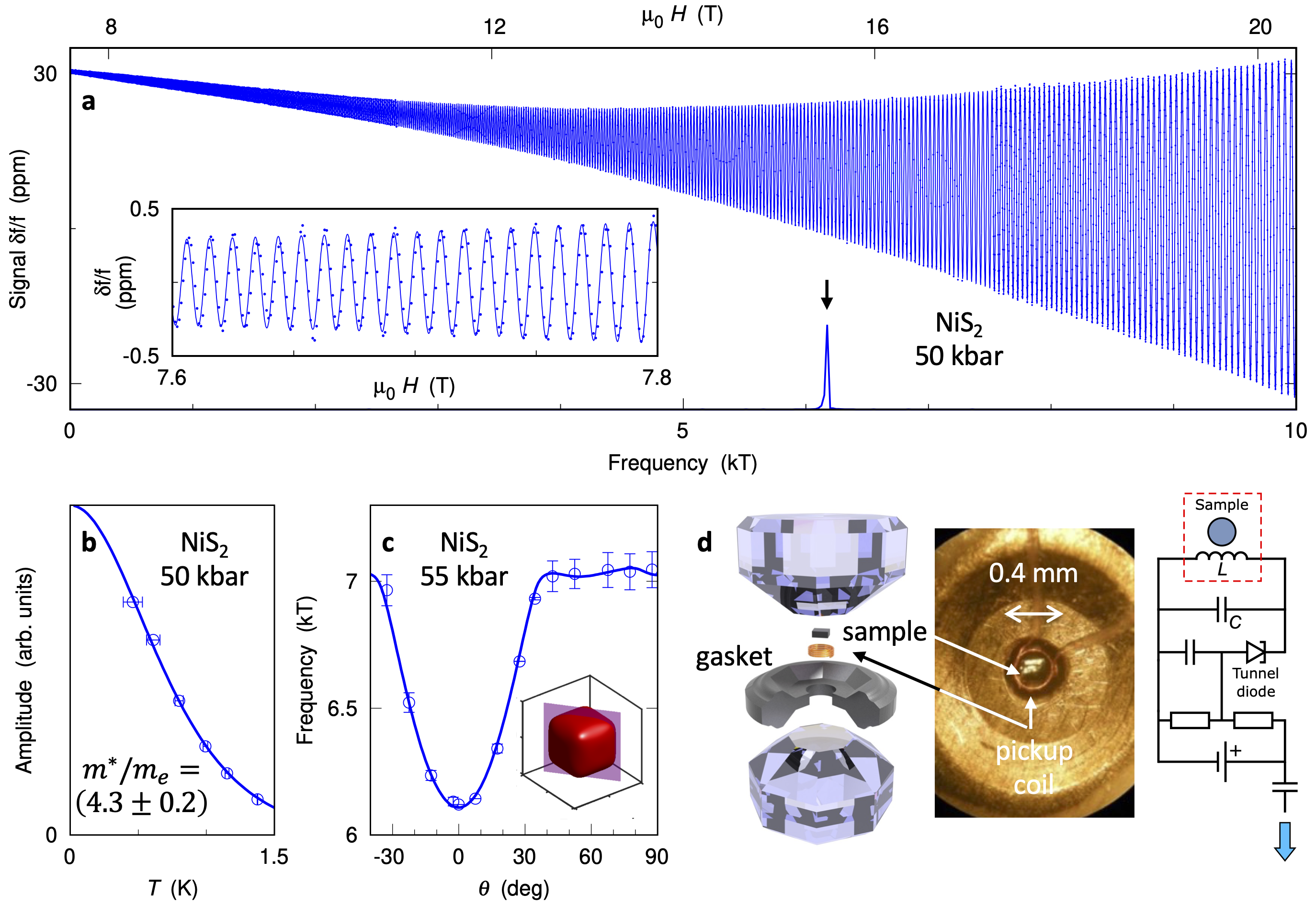
Submitted by Prof. Friedrich... on Sat, 07/10/2023 - 18:14
Correlated electron materials display a zoo of ordered states such as multiple forms of magnetism and superconductivity, but the metallic 'normal' state from which these arise is itself in many cases only incompletely understood. One of the most fundamental examples of such a correlated normal state occurs as a Mott insulator is metallised by doping or pressure: the high temperature superconducting cuprates illustrate the opportunities and challenges this situation engenders.
In Mott insulators, electrons are locked into position by their mutual interaction. Varying the lattice density by applied pressure makes it possible to metallise a Mott insulator and study the correlated metallic state, in which the grid-locked electrons have been set free. Foremost among the scientific questions surrounding this state is the fate of the electronic Fermi surface and the associated charge carrier mass. These can be obtained directly and precisely from the observation of quantum oscillations in high magnetic fields.
In a technical tour-de-force, QM scientists with colleagues at high field laboratories at Nijmegen and Tallahassee have probed these key properties, using ultra-sensitive quantum oscillation measurements under pressure in high-purity samples of NiS2. The work exploited pioneering progress in high-pressure anvil cell techniques combined with radio-frequency contact-free resistivity measurements. Data was collected at pressures up to and exceeding 100,000 atmospheres in magnetic fields of up to 35 T, and at low temperatures down to less than 0.1 K.
Our data, now published in PNAS, confirm key tenets of the canonical picture of Mott localisation, the Brinkman–Rice model: whereas the charge carrier concentration is conserved, the carrier mass takes on a divergent form on approaching the Mott insulating state. In an interesting twist, however, the mass divergence extrapolates to a critical point that is buried inside the insulating state raising further questions about the nature of the Mott insulator transition at low temperatures.
